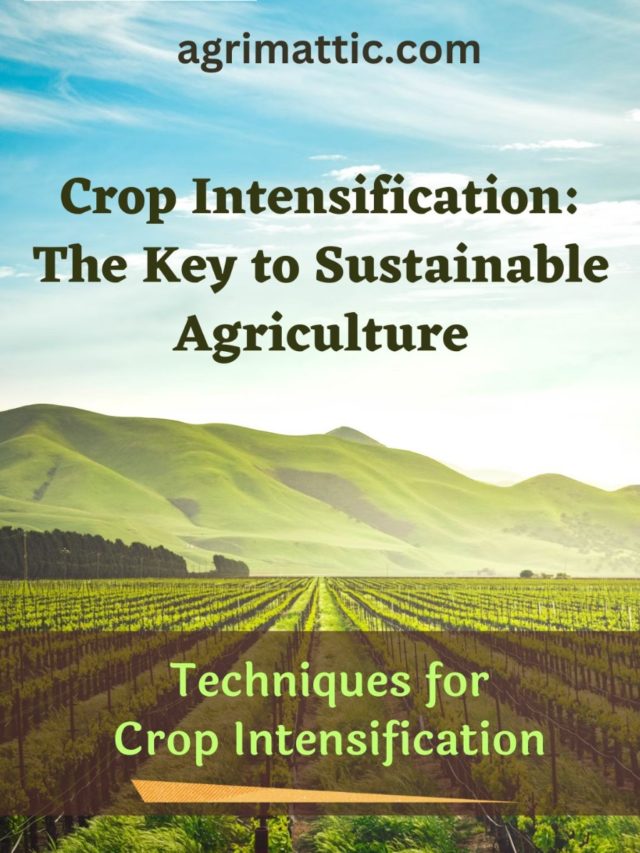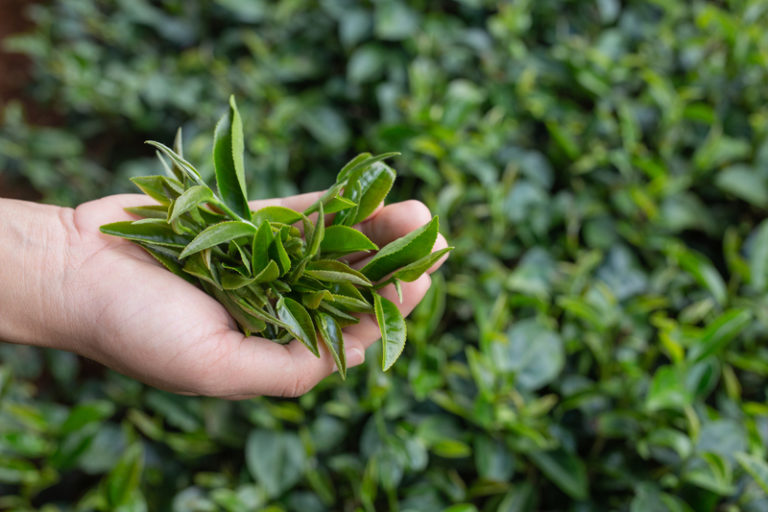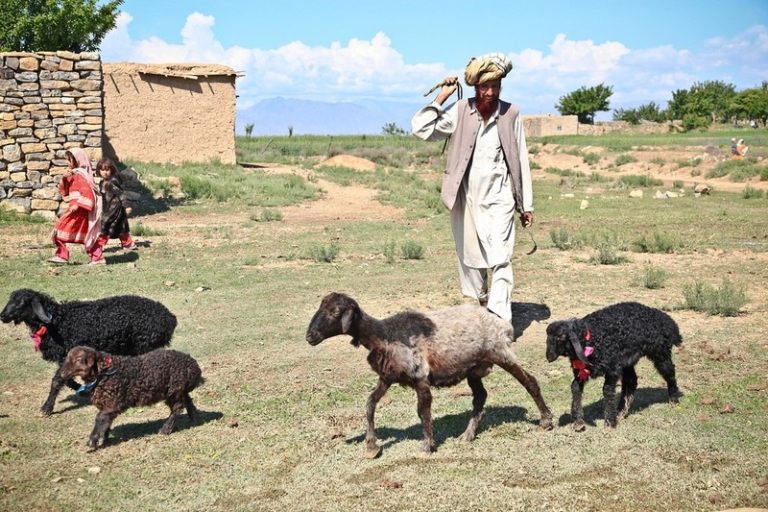Crop Intensification: The Key to Sustainable Agriculture
As the global population continues to grow, the demand for food is also on the rise. However, traditional farming methods are not enough to meet the increasing demand for food.
Crop intensification is a sustainable approach to agriculture that can help to address the challenges of food security, environmental degradation, and climate change.
Benefits of Crop Intensification
Crop intensification involves increasing the productivity of crops while reducing the resources used, such as land, water, and fertilizers. The benefits of crop intensification include:
Increased crop yields: Crop intensification techniques such as improved crop varieties, crop rotation, and intercropping can help to increase the yield of crops. This means that farmers can produce more food using the same amount of land.
Reduced land use: By increasing the productivity of crops, crop intensification can reduce the need for more land to be brought under cultivation. This can help to reduce deforestation and other forms of land use change.
Improved soil fertility: Crop intensification techniques such as crop rotation and intercropping can help to improve soil fertility. This means that farmers can reduce their dependence on fertilizers, which can be expensive and harmful to the environment.
Reduced water use: Crop intensification techniques such as irrigation management can help to reduce the amount of water used in agriculture. This is important in areas where water is scarce.
Lowered greenhouse gas emissions: Crop intensification can help to reduce greenhouse gas emissions from agriculture. This is because it reduces the need for more land to be brought under cultivation, which can result in deforestation and other forms of land use change.

Techniques for Crop Intensification
There are several techniques that farmers can use to intensify their crop production. These include:
Improved crop varieties: Farmers can use improved crop varieties that are more resistant to pests and diseases, and can withstand drought and other environmental stresses.
Crop rotation: Crop rotation involves growing different crops in the same field in a planned sequence. This can help to improve soil fertility and reduce the build-up of pests and diseases.
Intercropping: Intercropping involves growing two or more crops together in the same field. This can help to improve soil fertility, reduce pests and diseases, and increase crop yields.
Fertilizer management: Farmers can use fertilizers more efficiently by applying the right amount of nutrients at the right time. This can help to reduce the cost of fertilizers and reduce the environmental impact.
Irrigation management: Farmers can use irrigation more efficiently by using drip irrigation, mulching, and other techniques. This can help to reduce the amount of water used in agriculture.
Pest and disease management: Farmers can use integrated pest management (IPM) techniques to control pests and diseases. This involves using a combination of cultural, biological, and chemical methods.
Challenges and Solutions
While crop intensification has many benefits, there are also some challenges that need to be addressed. These include:
Land use conflicts: As the demand for food increases, there may be conflicts over land use between farmers, communities, and other stakeholders. This can be addressed through better land use planning and management.
Environmental degradation: Intensive agriculture can lead to soil erosion, water pollution, and other forms of environmental degradation. This can be addressed through sustainable agriculture practices such as crop intensification.
Water scarcity: Water is a scarce resource in many parts of the world. Farmers can use water more efficiently through techniques such as drip irrigation and mulching.
Labor shortage: Labor is a major constraint in agriculture, especially in developing countries. Farmers can use labor-saving technologies such as mechanization to reduce the demand for labor.
Technological limitations: Some crop intensification techniques may require access to advanced technologies that may not be available to all farmers. This can be addressed through research and development to develop affordable and accessible technologies.
Policy and market barriers: Some policies and market structures may hinder the adoption of crop intensification techniques. This can be addressed through policy reforms and market incentives to encourage the adoption of sustainable agriculture practices.
Case Studies of Successful Crop Intensification
Several countries have successfully implemented crop intensification to increase their food production and improve food security.
For example, in Ethiopia, the government has implemented the Agricultural Growth Program, which focuses on increasing the productivity of smallholder farmers through crop intensification techniques such as improved seed varieties, crop rotation, and intercropping. As a result, Ethiopia has achieved significant increases in food production and reduced poverty rates.
In India, the System of Rice Intensification (SRI) has been used to increase the yield of rice crops while reducing the amount of water and fertilizers used.
SRI involves using fewer seedlings, wider spacing, and more organic matter in the soil. This has helped to increase rice yields by up to 50% while reducing water use by up to 30%.
Future of Crop Intensification
The future of crop intensification lies in the development and adoption of new technologies and innovations.
For example, precision agriculture technologies such as remote sensing, GPS mapping, and drones can help farmers to monitor crop growth and apply inputs more precisely. This can help to reduce waste and increase productivity.
There is also a need for more research and development to develop crop varieties that can withstand environmental stresses such as drought and salinity. This can help farmers to produce crops in areas that were previously unsuitable for agriculture.
Conclusion
Crop intensification is a key strategy for achieving sustainable agriculture and ensuring food security. By increasing the productivity of crops while reducing the resources used, crop intensification can help to address the challenges of environmental degradation, water scarcity, and climate change.
However, there are also challenges that need to be addressed, such as land use conflicts and technological limitations. Through research and development and the adoption of sustainable agriculture practices, crop intensification can help to build a more sustainable and resilient food system for the future.
Also Read:
Permanent Crops: The Long-Term Solution for Sustainable Agriculture








